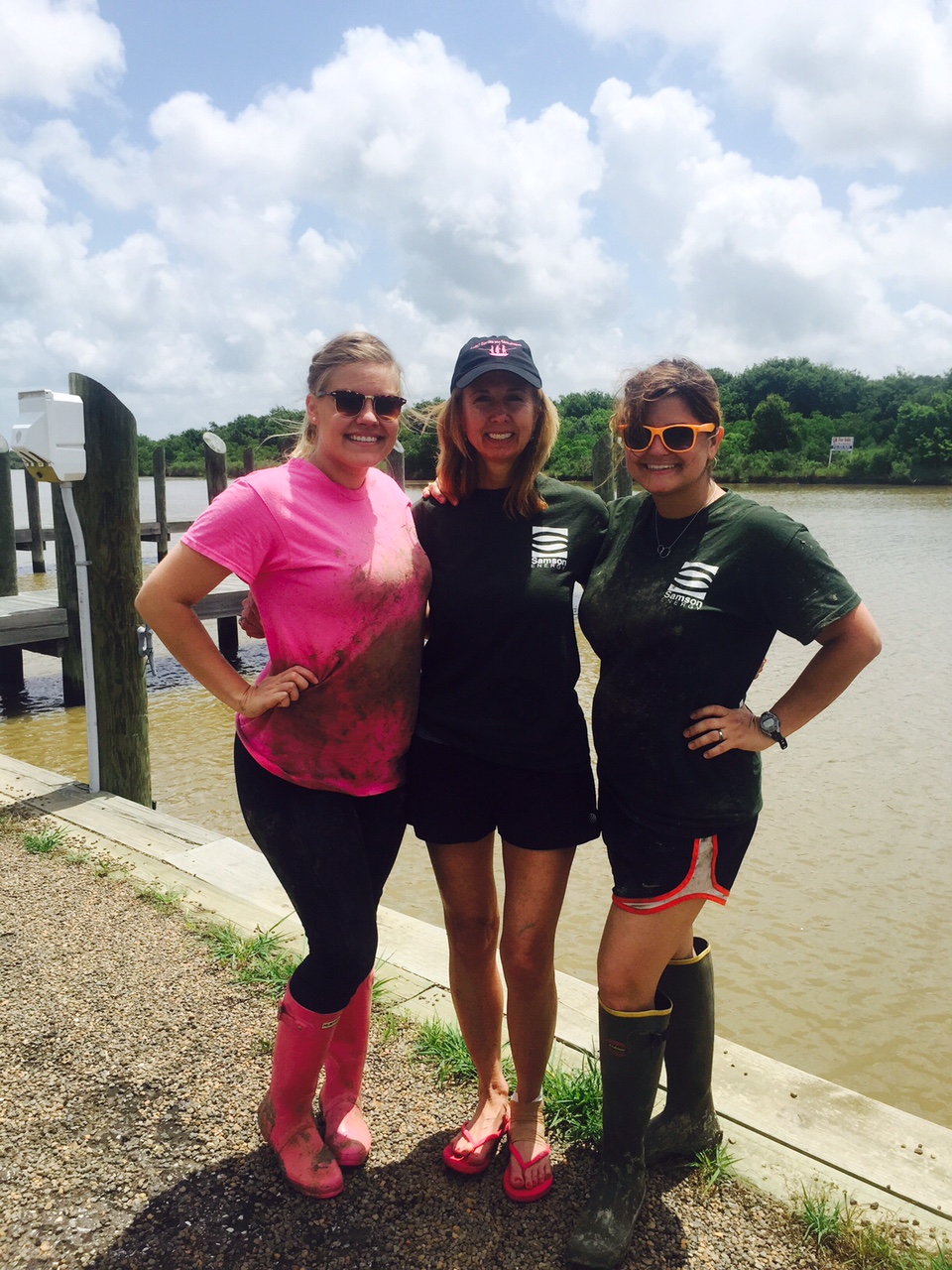
DESCO Volunteers Lead Dobie High School Students at Hip to Habitat Field Day
 5/12 and 5/14: DESCO volunteers Gary Kowalski, Arthur Perkins, Chris Little, Ally Altemose, Errin Bryner, Krystal Villanueva and Jackie Gilliam assisted the Galveston Bay Foundation with leading Dobie High School seniors in the Hip to Habitat event sponsored by Samson Energy over the course of two days. There were five stations for the students to participate in: marsh grass planting, oyster shell bagging, oyster reef creation, fish seining, and water quality analysis. On Tuesday, DESCO and Samson volunteers demonstrated proper marsh grass planting technique to the students as well as teaching them about the importance of marsh grass to the ecosystem and shoreline. Volunteers taught the students how to safely assemble the oyster bags used in the creation of the oyster reef. An assembly line of the students and volunteers was used to create the artificial oyster reef. Volunteers assisted Cindy Wilems (teacher and Citizen of the Bay award winner) seining for fish and identify their catch. DESCO enjoyed the collaboration with Samson/GBF/Dobie High School so much that they returned for another day of volunteering on Thursday. Both days the students were enthusiastic and engaged in each of the activities.
5/12 and 5/14: DESCO volunteers Gary Kowalski, Arthur Perkins, Chris Little, Ally Altemose, Errin Bryner, Krystal Villanueva and Jackie Gilliam assisted the Galveston Bay Foundation with leading Dobie High School seniors in the Hip to Habitat event sponsored by Samson Energy over the course of two days. There were five stations for the students to participate in: marsh grass planting, oyster shell bagging, oyster reef creation, fish seining, and water quality analysis. On Tuesday, DESCO and Samson volunteers demonstrated proper marsh grass planting technique to the students as well as teaching them about the importance of marsh grass to the ecosystem and shoreline. Volunteers taught the students how to safely assemble the oyster bags used in the creation of the oyster reef. An assembly line of the students and volunteers was used to create the artificial oyster reef. Volunteers assisted Cindy Wilems (teacher and Citizen of the Bay award winner) seining for fish and identify their catch. DESCO enjoyed the collaboration with Samson/GBF/Dobie High School so much that they returned for another day of volunteering on Thursday. Both days the students were enthusiastic and engaged in each of the activities.
Following the work, students and volunteers met at Jobe Beason Park where Samson provided a fajita lunch. Rani Henderson and Rachel Barski led the students in a “circle of positivity” where each student described their day in a handful of words such as: awesome, teamwork, muddy, wet, inspiring, rewarding and educational.
.jpg)
 “Students participated in creating a “living shoreline” by planting smooth cordgrass (Spartina alterniflora) in front of a high erosion area. Nearby an existing cordgrass population was already protecting the bank by absorbing the energy from the daily wave action and dissipating it before it arrives on
“Students participated in creating a “living shoreline” by planting smooth cordgrass (Spartina alterniflora) in front of a high erosion area. Nearby an existing cordgrass population was already protecting the bank by absorbing the energy from the daily wave action and dissipating it before it arrives on
shore. In addition to protecting the shoreline from erosion, these “living shorelines” provide habitat to fish and crustaceans. Living shorelines will ideally grow and expand overtime while man-made structures will inevitably break down overtime.
Along with the planting of smooth cordgrass on the shoreline, an oyster reef was constructed using recycled oyster shell bagged in mesh material. This oyster reef will create a breakwater to further dissipate wave energy before reaching the shoreline. The oyster reef will over time give live oysters a place to grow and give additional habitat for bay animals. These natural barriers are better than man-made structures such as bulkheads which can actually worsen erosion.
Living shorelines is an investment in land and sea stewardship that will benefit future generations.”
-Ally

Home >
News > Hip to Habitat 2015